How the Toyota Prius Became an Unlikely Racing Hero
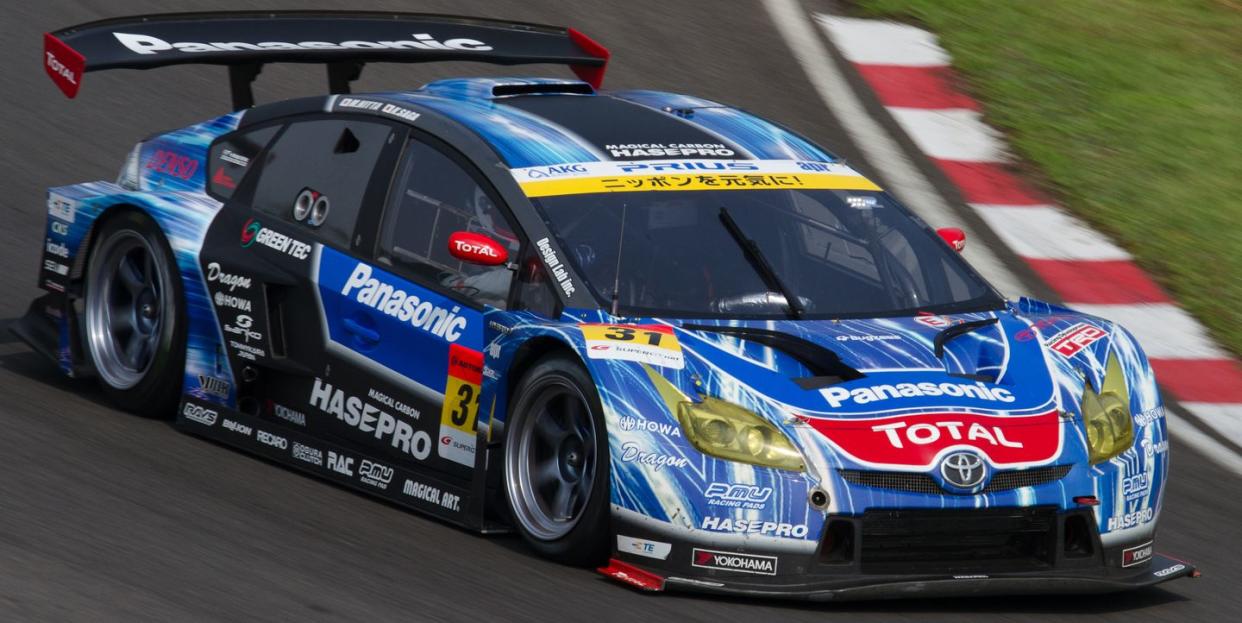
Picture yourself in the stands at a race track with a half-century of history, Mt. Fuji hidden in the clouds on an otherwise-sunny day Below, the brightly colored racing machines curl into the hairpin before the long straight. As they scream past the line, you rise to your feet – an underdog team, spun out in the early stages, is clawing its way back from 18th in the field. Another lap, and the car is within striking distance of the lead. Onward they come and, against all probability, you're cheering for a Toyota Prius.
Ten years ago, at the 2013 running of the Fuji 500km, the most unlikely racing machine of them all made a most unlikely comeback. It was the first win for a hybrid vehicle in the history of Japan's top-tier Super GT series, and it made an instant hero out of a car that has been an enthusiast punchline since it arrived in the early 2000s.
Not just any Prius, the Prius GT was a mid-engined V-8 monster, fitted with impressive aerodynamic addenda on a highly modified racing chassis, but still incorporating a near-factory hybrid drive system. Built and campaigned for Toyota by apr Racing – not to be confused with Audi/VW tuners APR – multiple generations of the Prius spent the last ten years winning podiums and hearts in Japan. In 2022, their run came to an end.
Yes, there is a new civilian Prius, and it's more dynamically engaging than any of the preceding models. It's sleek , the base 194 hp model is now about as quick to 60 mph as a Civic Si, and the chassis is stiffer and lighter. Nevertheless, Toyota won't race the new Prius.
That it decided to do so in the first place was a daring move. That apr stuck with the Prius through multiple generations, layouts, and rule changes is somewhat incredible. As recently as 2019, the decision was made to run a new version of the Prius GT instead of a racing-derived variant of the more-obvious GR Supra.
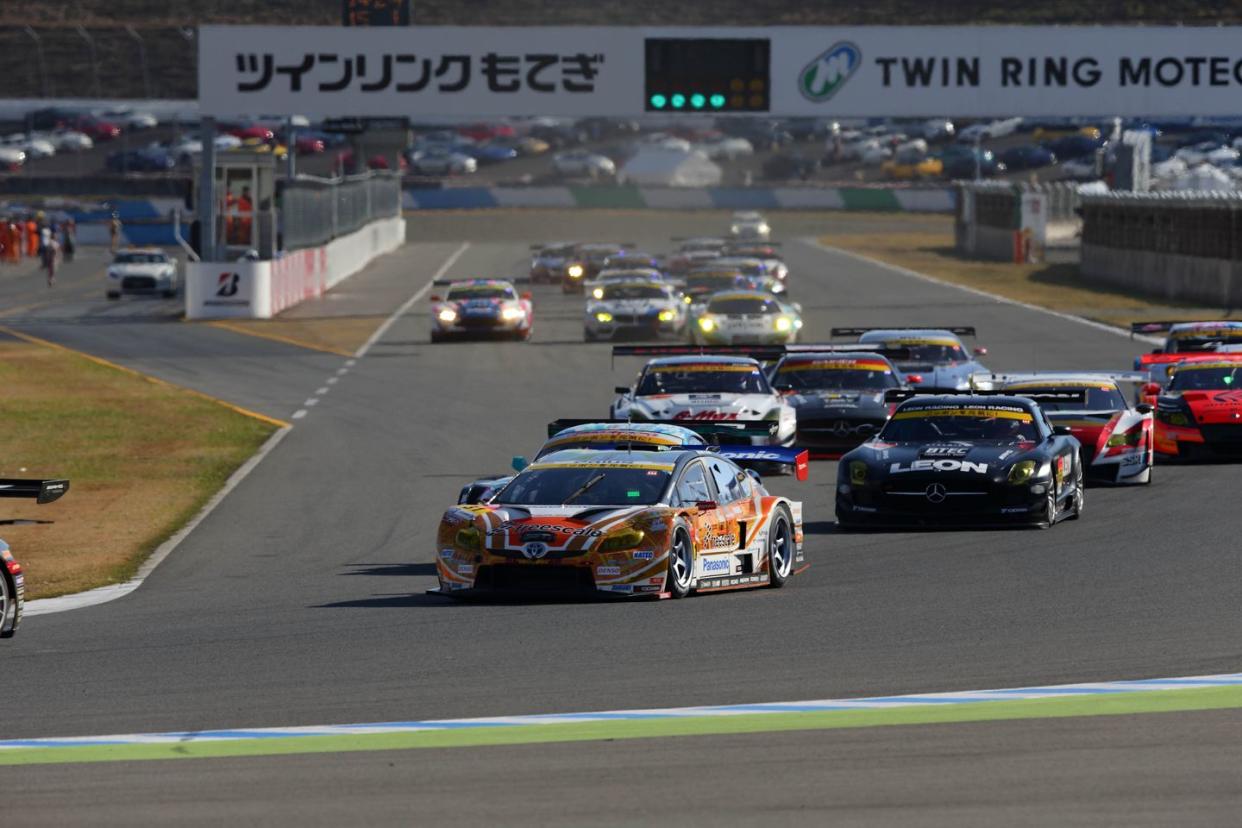
By this point, the Prius GT is a fan favorite with Super GT crowds. In Japan, a Prius is a family car, and seeing one use its hybrid power to get past a GT300-spec Lamborghini Huracan in a tight turn is certainly worth cheering about, and any owner might be forgiven for wishing, on the drive home, that their personal Prius came with an eight-cylinder soundtrack like the GT.
Even if you've never attended a Super GT race, nor seen video clips of one, you've likely heard this soundtrack. Toyota's RV8 racing engine dates back to the mid-nineties, and was used in various displacements and applications from Le Mans to IndyCar. In the case of the Prius GT, the powertrain was meant to be the little brother of Toyota's then-new TS030 LMP1 hybrid, the prototype racer about to take the fight to Audi in the World Endurance Championship.
Super GT, formerly the All Japan Grand Touring Championship (JGTC), is not well-known outside of its native Japan, though there have been crossover attempts with Germany's DTM series. There are two levels in Super GT, the more strictly formulaic GT500, and the lower GT300, which has a little more flexibility.
GT300 used to be a real wild west of racing in the JGTC days, probably the only place you could see a Dodge Viper racing against a Toyota-badged Chevy Cavalier. Super GT rules streamlined things a little, but are still fairly open to interpretation. The three main categories are FIA GT3 specification cars; regulation carbon-fibre chassis “dressed up” to look like a production car; and modified Japanese Automobile Federation (JAF) regulated production vehicles, of which the Prius is one. This means that despite being partly built of tube-frame supports and carbon-fiber panels, and having a bespoke racing engine, the Prius GT is genuinely Prius-based. In the case of the first car, built around the second-generation Prius road car, little more than the bulkhead, some of the floorpan, and half of the roof remained.
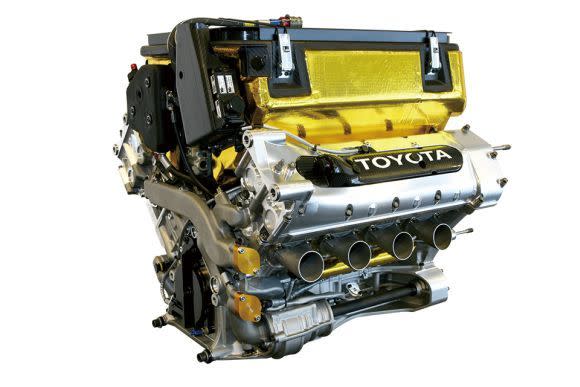
JAF rules at the time allowed for any engine from the same manufacturer to be used, so apr chose the 3.4-liter RV8K. As a seasoned constructor, the company had plenty of mid-engined experience, campaigning a GT300 version of the Toyota MR-S (effectively the third-generation MR2), so it plonked the 10,000-plus-rpm V-8 where a normal Prius would have rear seats.
Had that been the extent of the engineering, the Prius GT might have been pretty cynical—a racing car that looked like a road car, but was only tangentially related. Instead, apr reworked the factory hybrid system to pair with the 3.4-liter V-8, placing the battery where the passenger seat would be for better weight distribution. The components weren't all Prius-sourced, but they were all road car-spec, with the electric motor from an Aqua (Yaris), a lithium-ion battery from the larger Prius Alpha, and the engine control module from a Camry.
With the hybrid components, the Prius GT was heavier than other GT rivals, but it also had an edge in torque. The first three seasons – 2012, 2013, and 2014 – were the most successful, with five podium finishes, two pole positions, and one win but, as to be expected with any new race car, reliability was a problem. 2015 saw two more victories, thanks partially to a switch to Bridgestone tires, and a second-place finish for the apr team behind a GT300 Nissan GT-R. The next year brought greater challenges.
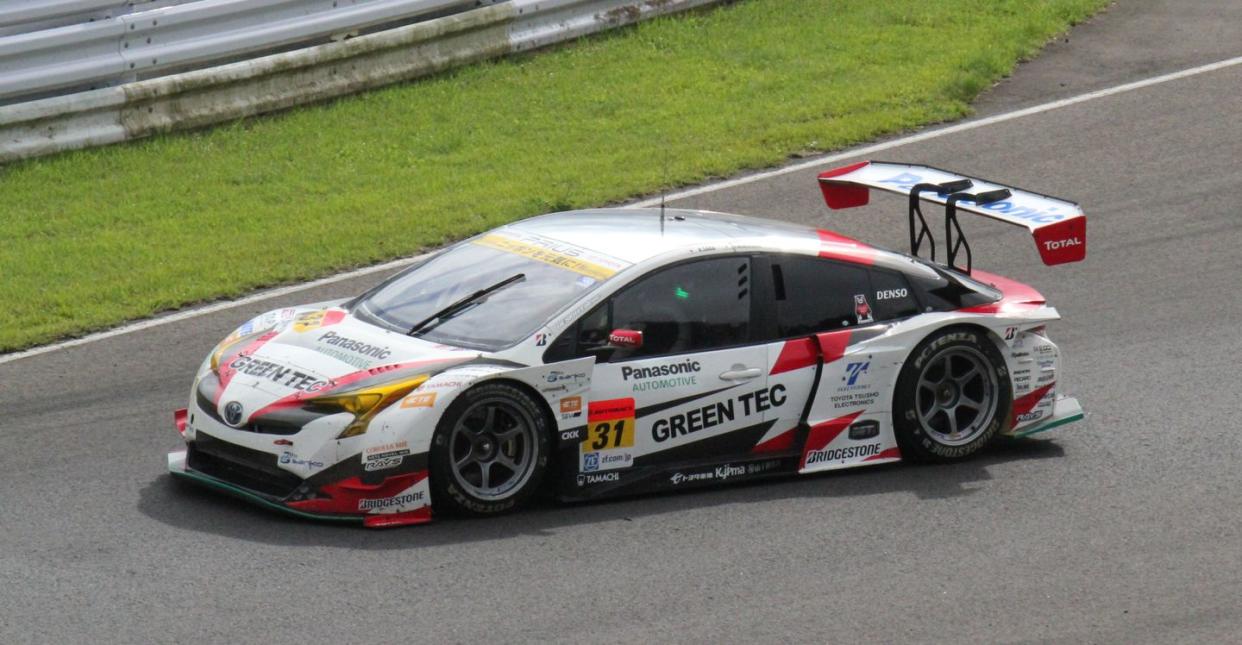
For 2016, JAF rules closed the loophole on engine positioning, requiring modified racing machines to have the same drivetrain layout as their road-going versions. The new Prius GT, now based on the third-gen road car, was homologated just days ahead of the rule change, and kept its mid-engine layout. Two cars were now in play, one with the original lithium-ion battery, and the other with a supercapacitor system closer in spec to Toyota's TS030/040 endurance prototypes. Over the next three years, the apr team would never win the championship outright, but racked up podium after podium and numerous pole positions.
The following year, 2019, was when everyone expected the plug would be pulled. Switching to front-engine layout surely meant an end to the Prius era, and the return of the Supra. But apr debuted a new Prius GT powered by a front-mounted 5.4-liter V8, as found in the GT3 version of the Lexus RC-F. Physically, it resembled the plug-in version of the Prius roadcar, but it thundered like a muscle car.
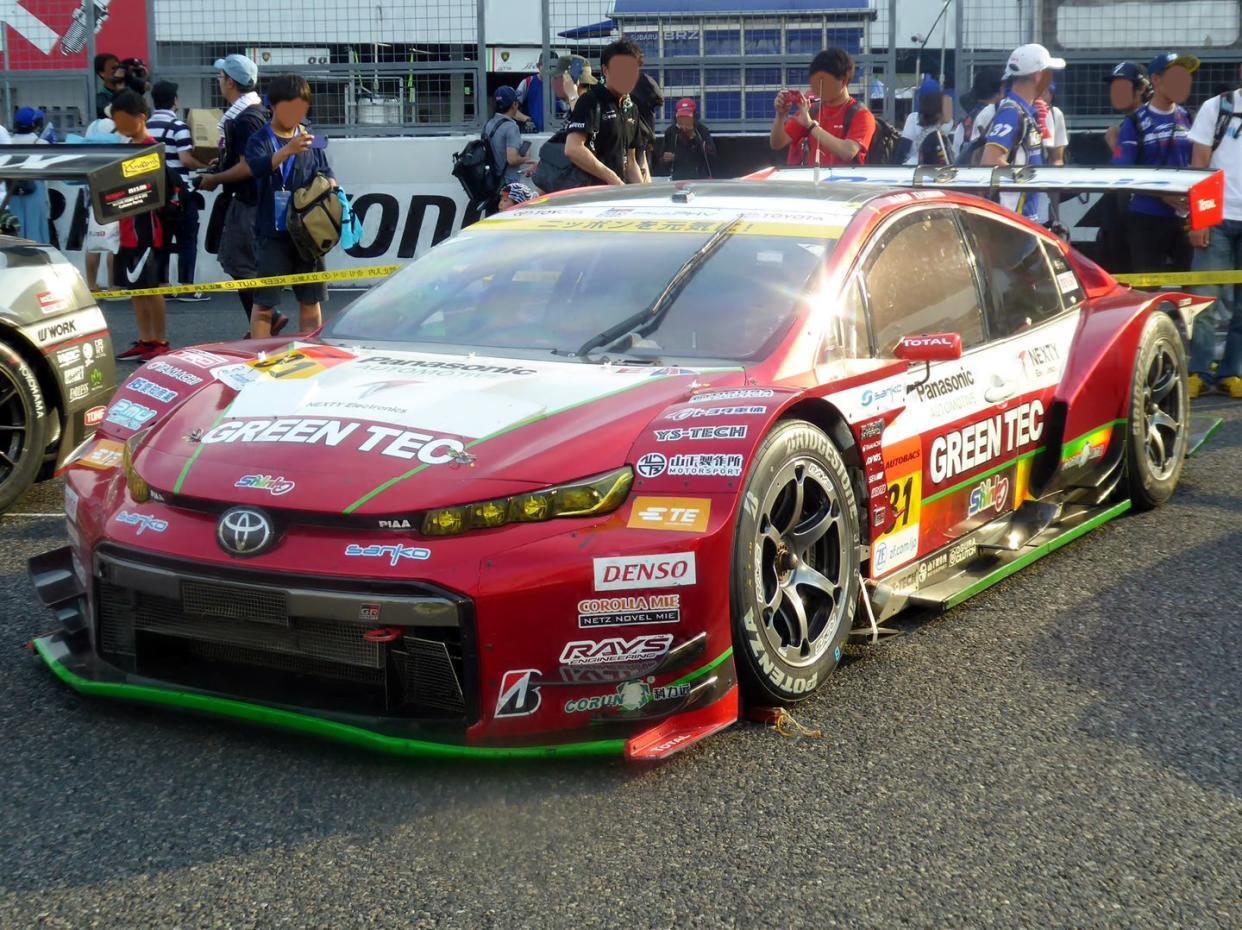
However, the magic was gone. The new front-engine Prius GT struggled to get into the top ten. Worse, of the two cars fielded, one was now non-hybrid and driven by an semi-amateur team, yet outperformed the professionally driven hybrid.
The final victory for the Prius GT came in 2021, setting pole position at the Autopolis circuit on Japan's southern Kyushu island. The professionally driven #31 was able to make good on its qualifying pace, finishing ahead of the Supras (introduced for the GT300 category in 2020), GT-Rs, and the rest of a 26-car field.
The crowd roared their approval, but it was a farewell. The Prius GT was no longer just an oddity, but an outlier, the lone four-door hatchback in a field of two-door coupes and purpose-built GT3 cars. The 2022 season held few bright points, but that was the end of things for a Prius in Super GT. The replacement car, based on the Lexus LC500h, was recently revealed at the Tokyo Auto Salon, and will carry the #31 for apr into the next seasons of Super GT's GT300 class.
If you've been on the highways through Tokyo and Yokohama, the most aggressive drivers are always in Priuses. They come up quick in the passing lane and shoot off out of sight, seemingly knowing where every speed camera lurks. In a sea of dawdling little kei boxes, a Prius moves with an alacrity not seen on the other side of the Pacific.
Perhaps such is the case because, in Japan anyway, the Prius is not the fuel-sipping rolling roadblock enthusiasts have always scorned. Families went to the great racetracks of Japan, and they sat in the stands and ate their mozzarella corn dogs and waited for the race to begin, and when a Prius GT went roaring past, they cheered. The opposite of an exotic. An unlikely hero. The people's choice.
You Might Also Like
